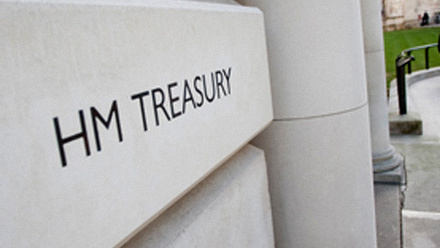Central Government Programme activities
The techUK Central Government Programme provides a forum for government to engage with tech suppliers. We advocate for the govtech sector, evangelise tech as a solution to public sector challenges, facilitate market engagement, and help make the public sector an easier market to operate in. Visit the programme page here.
The future of cyber resilience in the UK
In light of the UK government’s proposal to ban ransomware payments by organisations within Critical National Infrastructure, this webinar offers a timely and essential discussion on the evolving landscape of cyber resilience. Join SCC and HPE for an engaging session filled with expert insights, strategic guidance, and practical solutions tailored to the unique challenges faced by UK organisations today.
Financing the Future: Building a Smarter State Through Digital Public Services
This new report commissioned by techUK’s Public Services Board and written by Henham Strategy presents a strategic assessment of digital procurement across government and makes the case for a fundamental shift in funding for digital services.
Upcoming events
Latest news and insights
Learn more and get involved
Central Government updates
Sign-up to get the latest updates and opportunities from our Central Government programme.
Here are the five reasons to join the Central Government Programme
Join techUK groups
techUK members can get involved in our work by joining our groups, and stay up to date with the latest meetings and opportunities in the programme.
Become a techUK member
Our members develop strong networks, build meaningful partnerships and grow their businesses as we all work together to create a thriving environment where industry, government and stakeholders come together to realise the positive outcomes tech can deliver.
Meet the team

Heather Cover-Kus
Associate Director, Central Government and Education, techUK

Heather Cover-Kus
Associate Director, Central Government and Education, techUK
Heather is Associate Director, Central Government and Education at techUK, working to represent the tech supplier community to Central Government.
She started as Head of Central Government at techUK in April 2022 and was promoted to Associate Director in August 2025 supporting both the Central Government and Education programmes.
Prior to joining techUK in April 2022, Heather worked in the Economic Policy and Small States Section at the Commonwealth Secretariat. She led the organisation’s FinTech programme and worked to create an enabling environment for developing countries to take advantage of the socio-economic benefits of FinTech.
Before moving to the UK, Heather worked at the Office of the Prime Minister of The Bahamas and the Central Bank of The Bahamas.
Heather holds a Graduate Diploma in Law from BPP, a Masters in Public Administration (MPA) from LSE, and a BA in Economics and Sociology from Macalester College.
- Email:
- [email protected]
- LinkedIn:
- https://www.linkedin.com/in/heather-cover-kus-ba636538

Ellie Huckle
Programme Manager, Central Government, techUK

Ellie Huckle
Programme Manager, Central Government, techUK
Ellie joined techUK in March 2018 as a Programme Assistant to the Public Sector team and now works as a Programme Manager for the Central Government Programme.
The programme represents the supplier community of technology products and services in Central Government – in summary working to make Government a more informed buyer, increasing supplier visibility in order to improve their chances of supplying to Government Departments, and fostering better engagement between the public sector and industry. To find out more about what we do, how we do this and how you can get involved – make sure to get in touch!
Prior to joining techUK, Ellie completed Sixth Form in June 2015 and went on to work in Waitrose, moved on swiftly to walking dogs and finally, got an office job working for a small local business in North London, where she lives with her family and their two Bengal cats Kai and Nova.
When she isn’t working Ellie likes to spend time with her family and friends, her cats, and enjoys volunteering for diabetes charities. She has a keen interest in writing, escaping with a good book and expanding her knowledge watching far too many quiz shows!
- Email:
- [email protected]
- Phone:
- 020 7331 2015
- Twitter:
- @techUK,@techUK
- Website:
- www.techuk.org,www.techuk.org
- LinkedIn:
- https://bit.ly/3mtQ7Jx,https://bit.ly/3mtQ7Jx

Charles Bauman
Junior Programme Manager - Central Government, techUK

Charles Bauman
Junior Programme Manager - Central Government, techUK
Charles Bauman is a Junior Programme Manager in the Central Government Programme at techUK.
He supports the programme’s mission to represent the technology supplier community to the UK government and advocate for digital innovation to address public sector challenges. Charles helps facilitate market engagement, foster partnerships, and ensure that tech suppliers and the government work collaboratively to improve outcomes, deliver value for money, and enhance public services for citizens.
Before joining techUK, Charles gained significant experience in research, analysis, and strategic advisory roles. At H/Advisors Cicero, he specialised in public affairs and corporate communications, while at Verdantix, he supported sustainability research and advisory projects, focusing on regulatory and environmental challenges.
Charles holds an MSc in Theory and History of International Relations from the London School of Economics and Political Science (LSE) and an MA in Medieval History from King’s College London.
Charles enjoys volunteering with a think tank, reading, hiking, and spending time with his dog and family outside of work.
- Email:
- [email protected]
- Website:
- www.techuk.org
- LinkedIn:
- https://www.linkedin.com/in/charles-bauman-75712016b/








